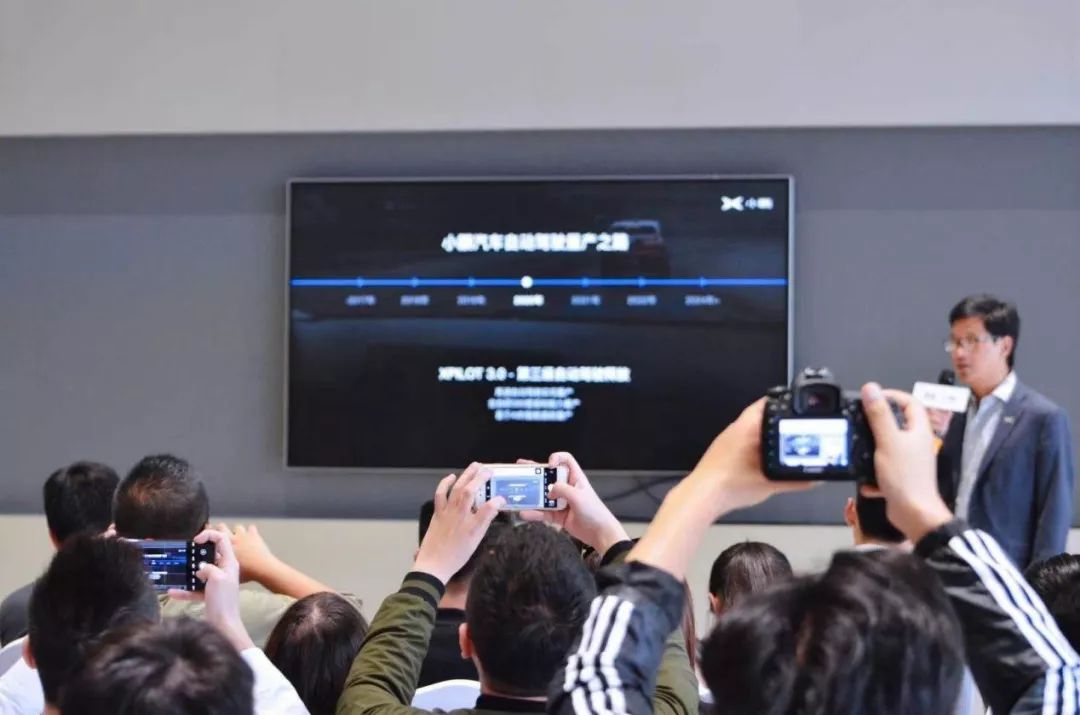Small Electric Vehicle Manufacturer, Xpeng, Holds First “Intelligent Technology Sharing Day” in October 2019
Xpeng, the small Chinese electric vehicle (EV) manufacturer, held its inaugural “Intelligent Technology Sharing Day” on October 24 2019. Before and after the event, Xpeng held offline sharing sessions in Beijing, Shanghai, Guangzhou, and Chengdu to discuss its latest developments in smart vehicle technology.
I’ve been waiting for this event for a long time. In late 2018, Wu Xinzhou, former head of the autonomous driving department at Qualcomm, joined Xpeng as its Vice President of Autonomous Driving, overseeing the development of Xpeng’s autonomous driving technologies. In a subsequent interview, he revealed two important pieces of information: first, the Xpeng E28 (later revealed to be the Xpeng P7 unveiled at the Shanghai Auto Show) will be equipped with an SAE Level 3 autonomous driving system. Second, the next generation of Xpeng’s autonomous driving will completely independently establish its own perceptual capability.
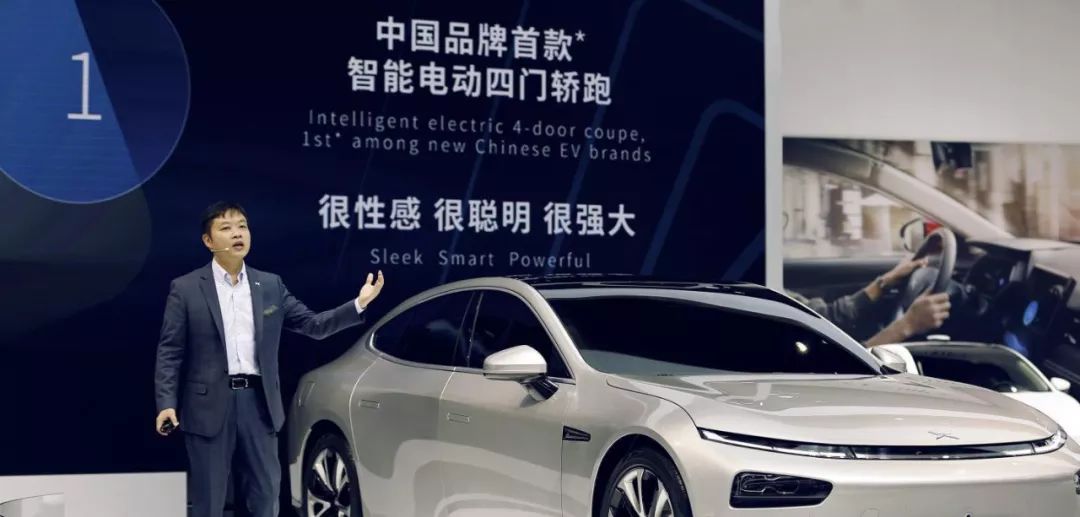
Let’s first talk about the perceptual capability. In 2019, the vast majority of automobile driving assistance/autonomous driving systems are jointly developed with suppliers or directly purchased from suppliers. Very few vehicle manufacturers opt for autonomous research and development. Up until now, Tesla is the only auto manufacturer that has built perceptual capability completely on their own. Xpeng hopes to become the second company to bypass Mobileye’s assistance and develop independently, which demonstrates the level of challenge Xpeng is facing.
Now, let’s talk about the Level 3 autonomous driving system. In 2017, the new Audi A8 was the first to be equipped with Level 3 autonomous driving system. Few companies followed suit since it is a complex and perplexing technical problem.
After the sharing event, my questions were fully answered in detail. The following covers Xpeng’s XPilot 3.0 product, features, hardware and software technology details. Enjoy it.
XPilot Hardware Overview
In summary, XPilot 3.0 has the strongest assisted driving hardware architecture in the entire industry. Specifically, it includes:
- NVIDIA Xavier autonomous driving chip
- 12 ultrasonic sensors
- 5 high-precision millimeter wave radars
- 13 autonomous driving cameras
- 1 in-car camera
- High-precision maps
- High-precision positioning fusion
Now let’s discuss the NVIDIA Drive Xavier autonomous driving chip in more detail. At CES 2018, Jensen Huang, founder and CEO of NVIDIA, announced that this chip had put NVIDIA two years ahead of its competitors.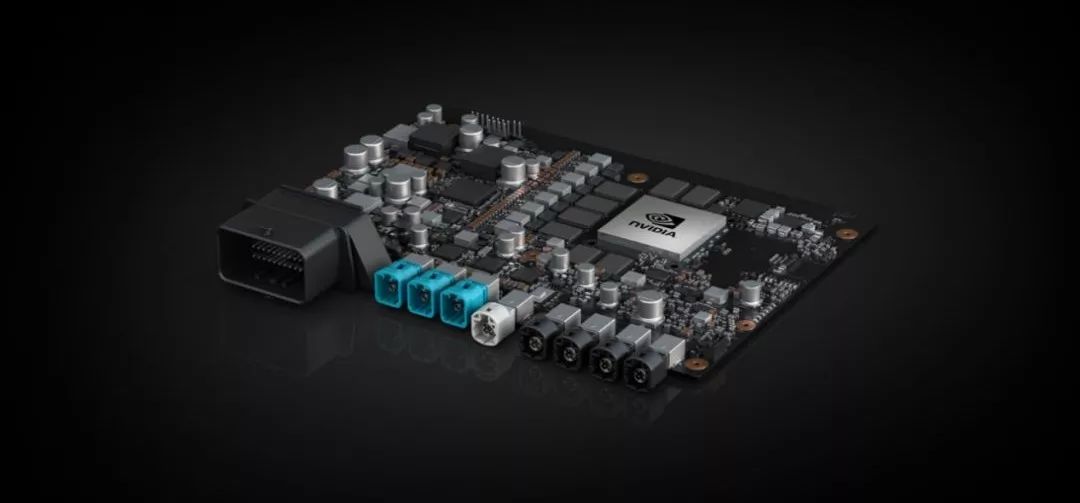
What is Xavier? It is the next-generation Drive PX2 chipset from NVIDIA, which is equipped in all Tesla Autopilot HW 2.0/2.1/2.5 models. Xavier’s computing power reaches 30 Tops, but only consumes 30 watts of power, which is 15 times more energy efficient than the PX2 model.
From the perspective of computing power, the Xavier chipset ranks as the second most productive self-driving chip among all automotive industries, just below Tesla’s Q2 fully autonomous driving (FSD) chip (144 Tops).
12 ultrasonic sensors are the standard equipment on the assisted driving system, so there is no need to elaborate.
5 high-precision radars include one front radar and four corner radars. Do you think the “high precision” is just a promotional slogan? Think again. According to 42HOW’s research, the upcoming XPilot 3.0 system will launch with Bosch’s fifth-generation millimeter-wave radar. Compared with the fourth generation, the fifth-generation radar has a wider field of view, increasing from 90° to 100°, bandwidth from 1G to 1.5G, and distance accuracy.
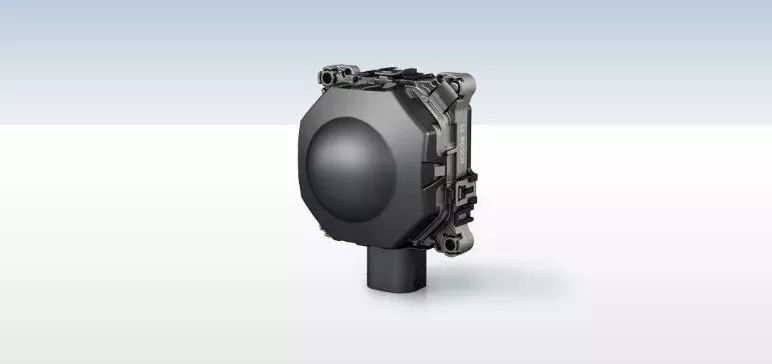
The improvements in the performance of the fifth-generation radar are evident, with the point cloud density increased tenfold and overall detection time, distance, width, and resolution improved. Although not widely publicized, according to 42HOW’s sources, Bosch’s fifth-generation radar will also be included in the next-generation self-driving system of another well-known new car maker, in addition to XPeng Motors.
Finally, the most noteworthy feature is the 13 cameras, including four front cameras, one three-camera module, one front safety auxiliary camera, five enhanced perception cameras (two on each side and one at the back), and four surround view cameras, for a total of 13.
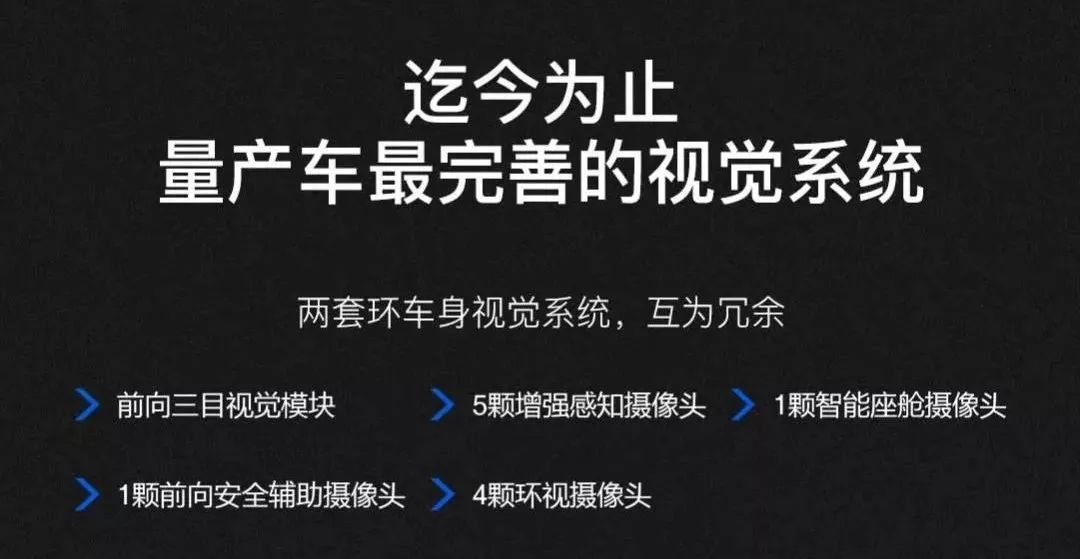 ## First question: Why are there four cameras in the front? Actually, it is a Tesla-like three-camera system combined with a single camera provided by a supplier. According to Wu Xinzhou, the purpose of this camera is to provide redundant perception. When the three cameras fail in extreme cases, this camera will take over.
## First question: Why are there four cameras in the front? Actually, it is a Tesla-like three-camera system combined with a single camera provided by a supplier. According to Wu Xinzhou, the purpose of this camera is to provide redundant perception. When the three cameras fail in extreme cases, this camera will take over.
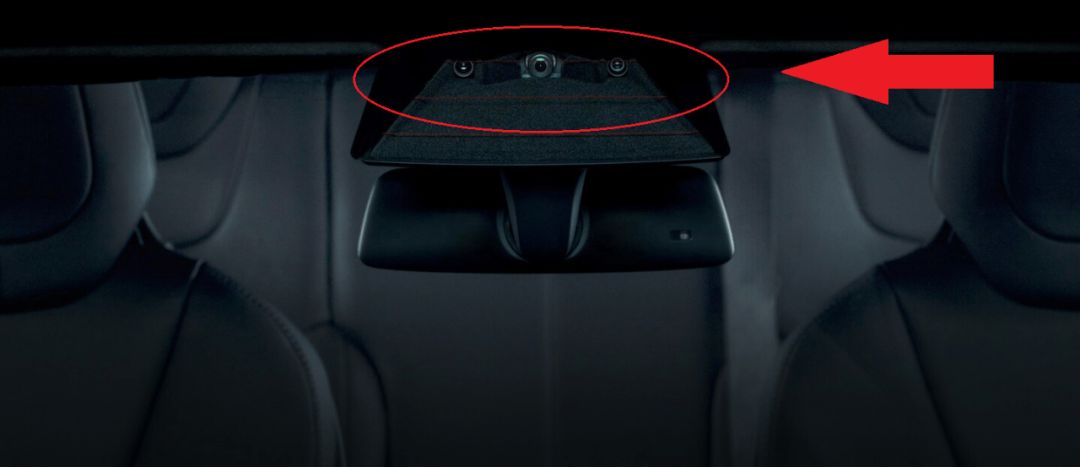
Secondly, there are five enhanced perception cameras. Here comes a question: What sensors do we rely on for the perception of the vehicle’s sides and rear? Tesla’s answer is cameras, NIO’s answer is millimeter-wave radar, and XPeng Motors’ answer is “I want them all.” Combined with the layout of the millimeter-wave radar mentioned earlier, the XPeng XPilot 3.0 achieves complete coverage of the entire car with cameras and millimeter-wave radar without any blind spots.
Thirdly, if there is already complete coverage, why are there four additional surround-view cameras?** The four surround-view cameras are used for 360° imaging and automatic parking functions.** Wu Xinzhou mentioned that XPeng Motors has made many attempts and verifications to reduce the complexity of the sensor architecture, but it was found to be very difficult to realize 360° imaging and automatic parking with the enhanced perception cameras mentioned above.

Including the fact that Tesla has not yet provided 360° imaging, and the automatic parking function experience is also relatively poor. On the one hand, this is because the United States is vast and sparsely populated, and there is no urgent pressure for Tesla headquarters to develop the above functions. On the other hand, it is also due to the high development difficulty caused by the sensor architecture.
Finally, there is one in-car camera, high-precision map, and high-precision localization fusion, which can be combined into one. Similarly, the term “high-precision” here is not an exaggeration. The XPeng XPilot 3.0 achieves very precise positioning through an RTK differential plus dual-frequency capability, ultra-high-precision IMU, and a high-precision map provided by the supplier. All three are configured for L3 level autonomous driving.
In short, this is the most comprehensive positioning module in mass-produced cars, and the resolution of high-precision maps can reach decimeter-level accuracy, which is also the highest precision achievable in mass-produced cars.## Who achieves XPilot 3.0?
Without accident, the first XPilot 3.0-equipped vehicle, XPeng P7, will be delivered by Q2 2020. With great hardware architecture, it also requires a matching software engineering team to achieve it.
So, how much investment has XPeng made in autonomous driving software engineering?
Below are the core executives of the XPeng autonomous driving department.
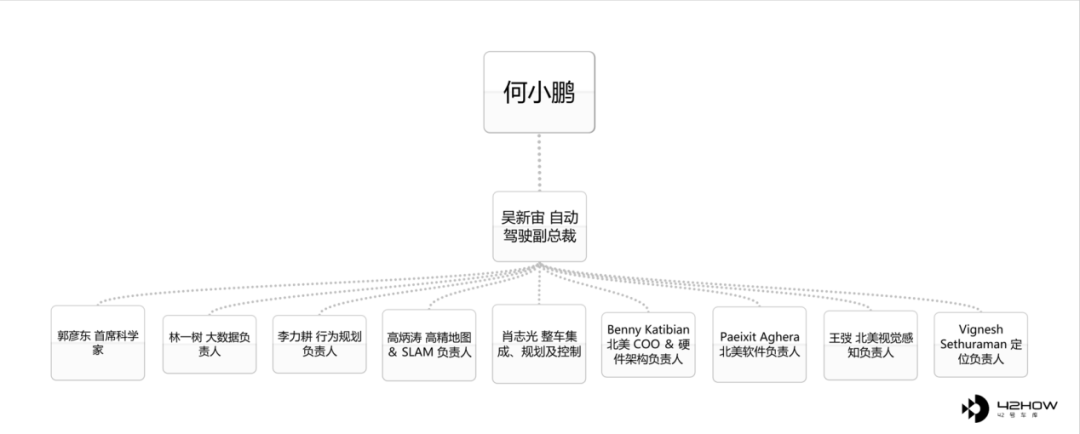
New automakers like to emphasize globalization, so-called “looking for top talent in the right place.” But few companies like XPeng have such a scattered business.
Of the 9 people mentioned above, Chief Scientist Yan Dong Guo is also the head of the Beijing team; High-precision Map & SLAM Director Bingtao Gao is the head of the Shanghai team; Yishu Lin and Zhiguang Xiao lead the Guangzhou team, and the rest are based in Silicon Valley. Among them, Benny Katibian, Paeixit Aghera, and Vigensh Sethuraman are graduates of Qualcomm based in San Diego and are core members of Qualcomm’s former autonomous driving team.
The last XPeng North American visual perception director, Tao Wang, was originally a co-founder of Drive.ai, an autonomous driving startup company. In June 2019, Apple acquired Drive.ai for no more than $77 million. Around the same time, Tao Wang joined XPeng’s North American autonomous driving team.
In addition to executives, the overall size of the team is also rapidly expanding. This can be seen from the before and after statements of Xin Zhou Wu. When XPeng Auto announced that Xin Zhou Wu joined on March 13th, Wu’s comment on the team size was still “nearly 200 people,” but in the sharing session on the 24th, this number had rapidly expanded to “a total of 320 members.”
Now, let’s talk about XPeng’s functional evolution graph. In fact, it is not complicated. From 2018 to the present, XPeng has successively achieved L1, completely self-developed/self-implemented data-closed-loop automatic parking, L2, remote parking, and automatic lane change assistance (multi-lane assistance) for mass production.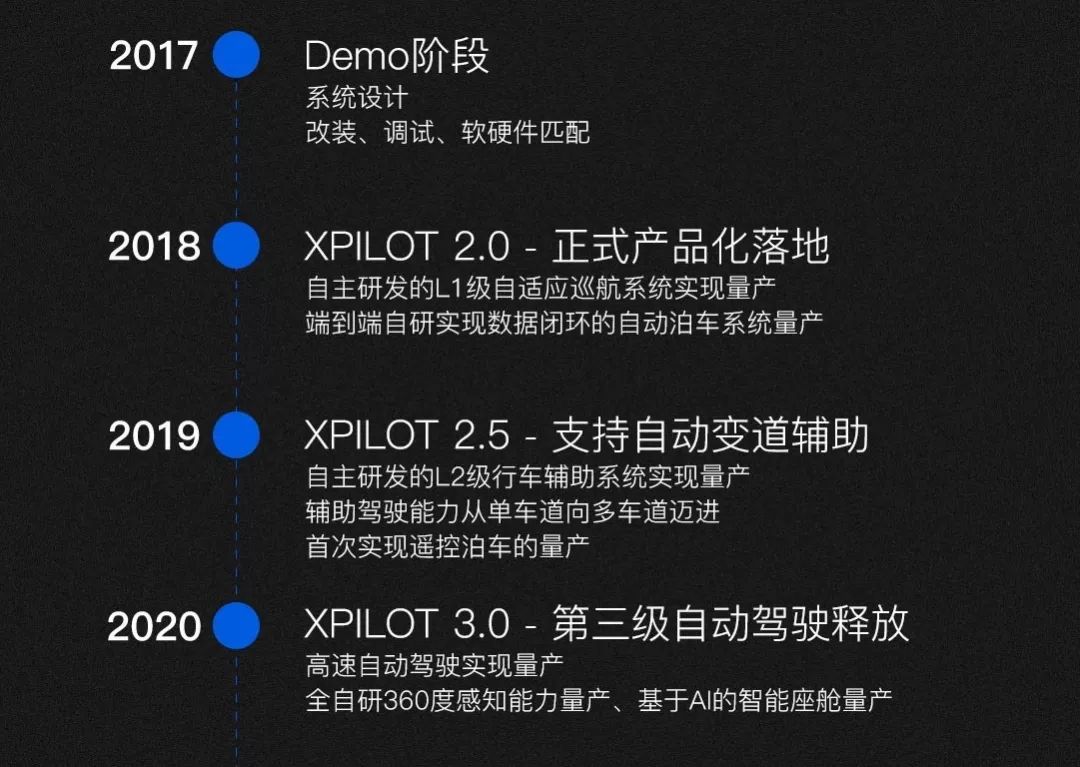
With the launch of XPeng P7 equipped with XPilot 3.0 in 2020, XPeng plans to achieve mass production of high-speed autonomous driving and fully self-developed 360° perception capability.
According to Wu Xinzhou, XPeng will achieve mass production of automated navigation-assisted driving (i.e., automatic driving in and out of highway ramps, automatic lane change and overtaking based on road conditions) by the end of next year, which is within six months after the launch of P7.
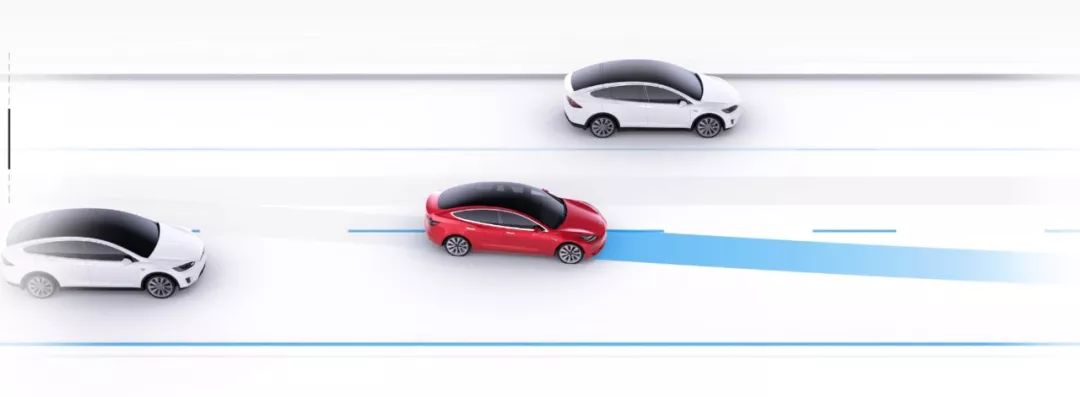
You must be curious about what “high-speed autonomous driving” means here? What exactly is L3 level autonomous driving?
To achieve L3 level autonomous driving, the first is what we mentioned earlier, XPilot 3.0 has achieved dual-camera & radar 360° coverage with no blind spots, while supporting high-precision map matching and positioning, as well as monitoring the driver through the in-car camera. From the perspective of sensors, XPilot 3.0 has the perception conditions for L3 level autonomous driving.
Secondly, we want to talk about redundant support. A set of L3 level autonomous driving systems, in addition to sufficient computing power support for abundant sensor data, effective redundant fault-tolerant design is the key for L3 level autonomous driving systems to be approved by regulatory authorities.
Just as we mentioned earlier, in order to achieve perception redundancy, XPeng has spared no effort to deploy four sets of dual-front cameras. In addition, XPilot 3.0 has also made certain redundant design efforts in the aspect of the controller.
Therefore, it can be said that the only obstacles that hinder XPeng L3 production are the readiness of the software system and approval from regulatory authorities.
Finally, let’s talk about a widely existing problem in the intelligent automotive field: it is well known that in order to avoid the conflict between the long cycle update of the automotive industry and the rapid iteration of Moore’s Law in the consumer electronics field, all Tesla Autopilot 2.0 models produced since October 2016 support upgrade to the FSD chip, which provides the computing power foundation for achieving autonomous driving.
In the official poster of XPeng XPilot 3.0, there are such words: “Hardware foundation support XPilot 3.0 can be upgraded to XPilot 4.0.” When I posed this question to XPeng Vice President Ji Yu, he gave the following answer.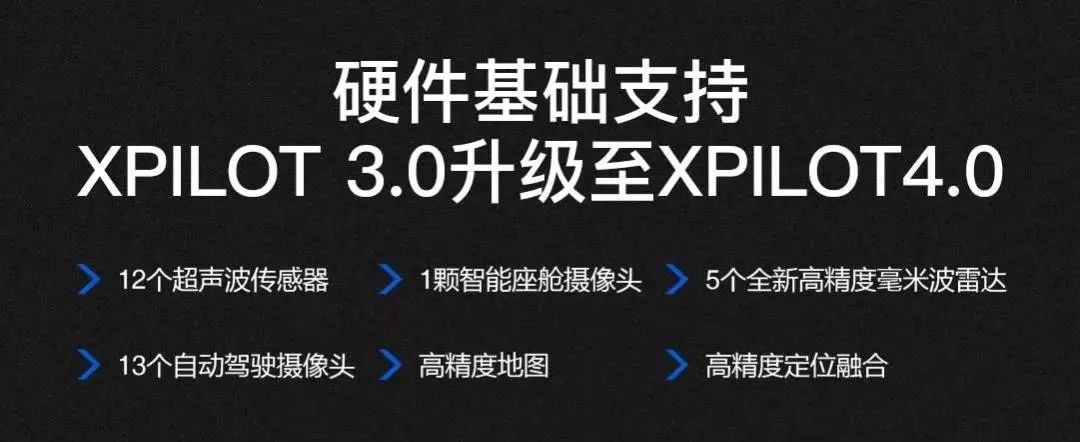
XPeng has indeed paid attention to this issue and will try to make downward or backward compatibility possible in the product definition phase of the new project. For example, if the chip or board is updated, it can also be installed on an old car, and these reservations will be made. In the future, we will also announce corresponding methods at the appropriate time.
This is almost equivalent to the official announcement that XPilot 3.0 supports hardware upgrades.
At the end, let’s shift our focus to XPeng P7. In addition to XPilot 3.0, XPeng P7 also has NEDC 600+ km endurance previously announced, 4-second/100-kilometer acceleration, Nvidia Xavier and Qualcomm Snapdragon 820A dual flagship chips, whole-vehicle ECU OTA, 100-megabit Ethernet central gateway, and more. You can feel that after XPeng G3 took a try, P7 is now fully armed.
However, from the market perspective, the entire Chinese and global automobile market is becoming SUV-oriented, and no one can stop the decline of the mid-size sedan market, which is an indisputable fact. Looks bad, right? But this unfavorable situation has also created a market vacuum: everyone is developing SUVs, but there is no C-class pure electric sedan with a sufficient degree of intelligence.
Let me make it clearer: There are already plenty of domestic intelligent electric SUVs that can replace Model X, but none of them can replace Model S in the C-class intelligent electric sedan market.
How will XPeng price their P7? What will be the market performance of XPeng P7? The answer to this question is very exciting.

 * After trying the current XPeng G3, I am looking forward to its long-range version | 42Test
* After trying the current XPeng G3, I am looking forward to its long-range version | 42Test

This article is a translation by ChatGPT of a Chinese report from 42HOW. If you have any questions about it, please email bd@42how.com.
